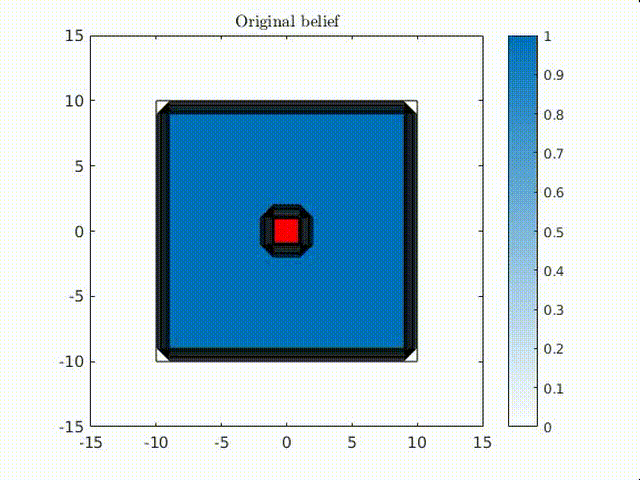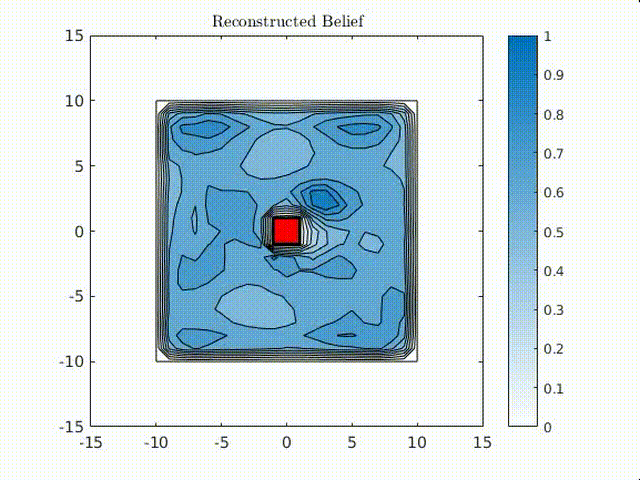E-PCA
E-PCA is a non-linear dimensionality reduction technique particularly suited to probability distributions, see the paper Exponential Family PCA for Belief Compression in POMDPs.
The left figure illustrates a filtered 2D probability distribution of an agent’s location in a square world with a red block (goal state) at its center. The right figure is the result of the probability density function being reconstructed after a latent lower dimensional space was leaned via E-PCA.


In the above animation the original dimension of the probability distribution is 625 and the learned E-PCA latent space has 8 dimensions. This is a very large compression, we went from 625 dimensions to 8 and as we can see the reconstructed probability distributions (right) are very similar to the original distributions (left).
The optimisation to find the latent space feature space is convex and can be solved though Newton’s methods. The matalab implementation follows closely the aglorithm details given in the paper Finding Approximate POMDP Solutions Through Belief Compression, see page 14.
